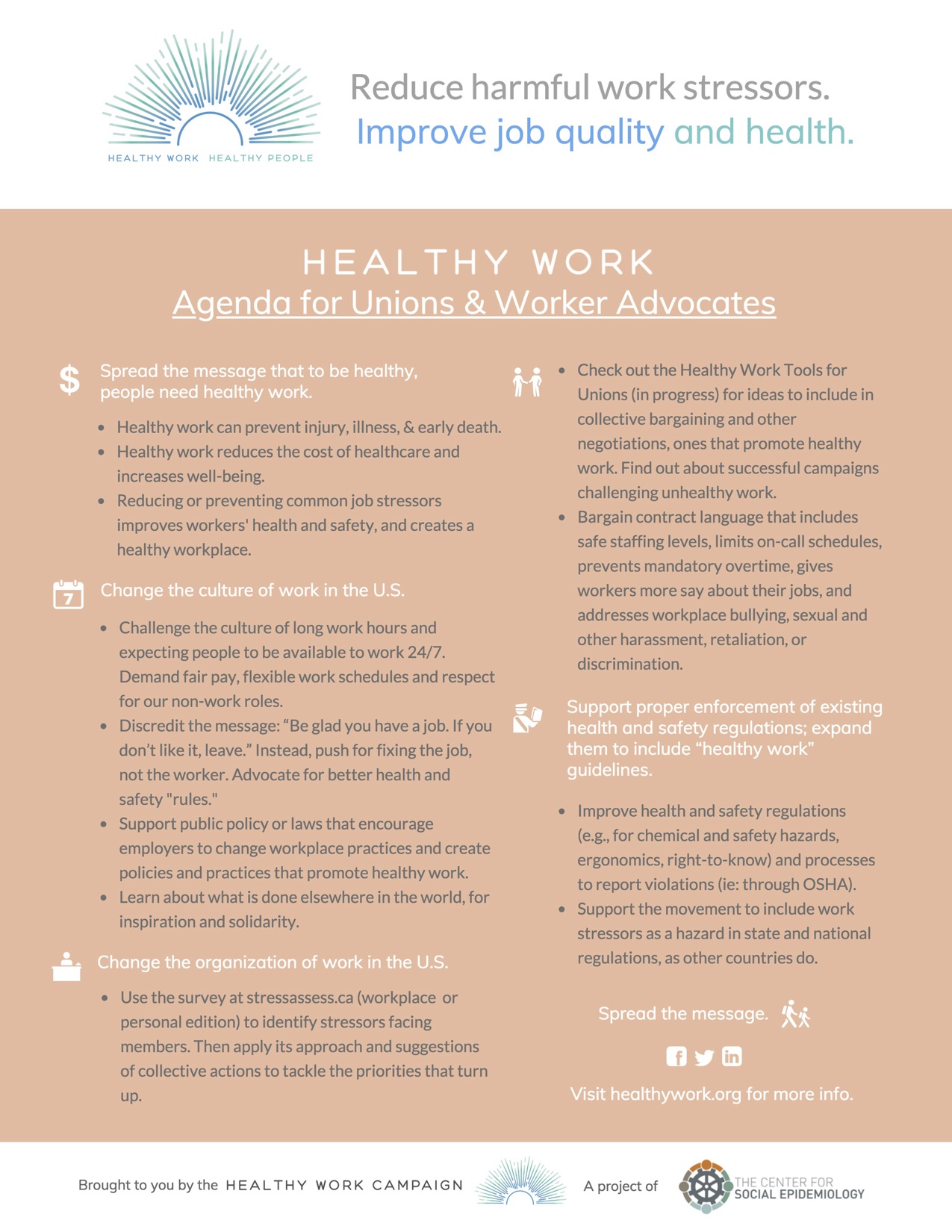Healthy Work Agenda
For Unions & Worker Advocates
The Healthy Work Agenda is designed to promote understanding, discussions, and actions that advance “healthy work.” (See the Principles of Healthy Work to learn more.)
Created to support the Healthy Work Campaign, the Agenda is a set of actions that can support and promote “healthy work.” These actions are part of an effort to encourage “thinking big” about what’s needed to create healthy work in the U.S.
The Agenda can start a conversation or support existing discussions or activities. Individuals, employers, labor unions, and other worker advocates and organizations can support just one or a range of action items listed.
Read on. And be sure to let us know how you’ve used it, and what happened.
Thanks!
The Healthy Work Agenda
For Unions & Worker Advocates
Spread the message that to be healthy, people need healthy work.
- Healthy work can prevent injury, illness, disease and early death. (See Research.)
- Healthy work reduces the cost of healthcare and increases well-being. (See Costs.)
- Reducing or preventing common job stressors improves workers’ health and safety, and creates a healthy workplace. (See Principles of Healthy Work.)
Change the culture of work in the U.S.
- Challenge the culture of long work hours and expecting people to be available to work 24/7. Demand fair pay, flexible work schedules and respect for non-work roles.
- Challenge the message: “Be glad you have a job. If you don’t like it, leave.” Instead, push for fixing the job, not the worker. Advocate for better health and safety “rules.”
- Support public policy or laws (e.g., paid family leave, prevention of job-related bullying, sexual and other harassment, discrimination and retaliation) that encourage employers to change workplace practices and create policies and practices that promote healthy work.
- Learn about what is done elsewhere in the world, for inspiration and solidarity.
Change the organization of work in the U.S.
- Use this online survey to identify stressors facing members. Then apply its approach and suggestions of collective actions to tackle the priorities that turn up.
- Check out the Healthy Work Tools for Unions (in progress) for ideas to include in collective bargaining and other negotiations, ones that promote healthy work. Find out about successful campaigns challenging unhealthy work.
- Bargain contract language that includes safe staffing levels, limits on-call schedules, prevents mandatory overtime, gives workers more say about their jobs, and addresses workplace bullying, sexual and other harassment, retaliation, or discrimination.
Support proper enforcement of existing health and safety regulations; expand them to include “healthy work” guidelines.
- Improve health and safety regulations (e.g., for chemical and safety hazards, ergonomics, right-to-know) and processes to report violations.
- Support the movement to include work stressors as a hazard in state and national regulations, as other countries do.







